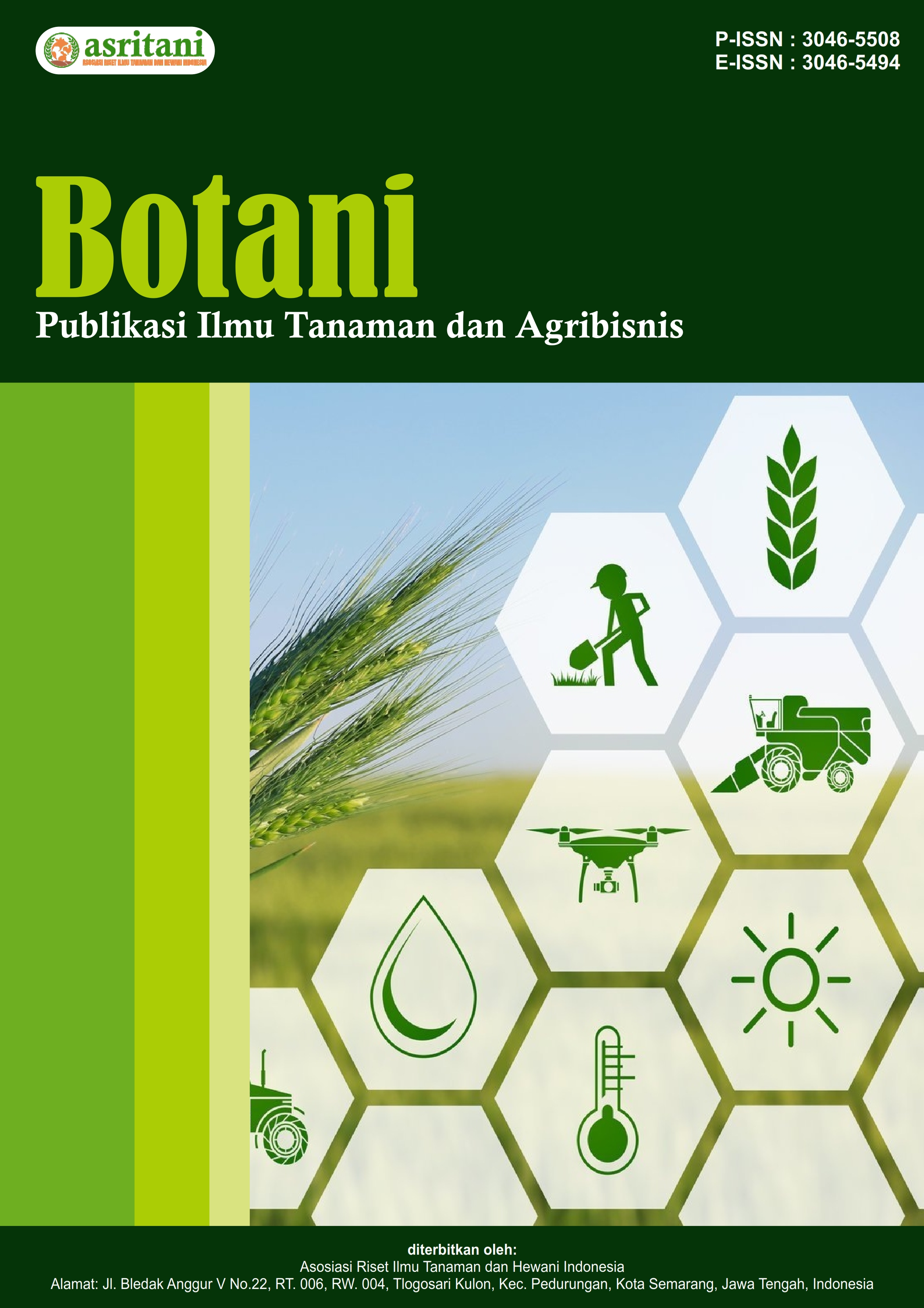Analisis Kurangnya Pemanfaatan dan Upaya Konservasi Mangrove oleh Masyarakat di Kecamatan Pantai Labu
DOI:
https://doi.org/10.62951/botani.v2i2.344Keywords:
Conservation, Efforts, Mangrove, UtilizationAbstract
Mangroves are plants whose natural habitat is in coastal areas, they should require the role of coastal communities to manage mangroves. In Pantai Labu District, four types of mangrove plants were found that grow abundantly in the area, namely mangroves (Rhizophora), api-api (Avicennia), nipah (Nypa), and pedada (Sonneratia caseolaris). Although the types of mangroves in this area are quite diverse, unfortunately the community has not utilized them optimally. So far, the community has only taken parts of the mangrove tree trunks to be used as firewood or sold, while the fruit, especially pedada fruit, is often left alone to rot without being utilized. The method in this study uses qualitative descriptive. This study aims to describe and understand the conditions of mangrove utilization and conservation efforts by the community in Pantai Labu District in depth, based on data obtained from observations and interviews with local residents.
References
Alongi, Daniel M. 2008. “Mangrove Forests: Resilience, Protection from Tsunamis, and Responses to Global Climate Change.” Estuarine, Coastal and Shelf Science 76 (1): 1–13.
Hartuti, Purnaweni. 2019. “Pemanfaatan Mangrove Untuk Pemberdayaan Masyarakat Pesisir.” Jurnal Collaborative Governance Dalam Pengembangan Pariwisata Di Indonesia Rekreasi 1 (1): 71–78.
K. , Kathiresan, and Bingham B.L. 2001. Biology of Mangroves and Mangrove Ecosystems. Advances in Marine Biology. Vol. 40.
Koga, Keiichi, Yasuro Kadono, and Hiroaki Setoguchi. 2008. “Phylogeography of Japanese Water Crowfoot Based on Chloroplast DNA Haplotypes.” Aquatic Botany 89 (1): 1–8.
Leksono, Desmelati. 2017. “Pemanfaatan Buah Mangrove Pedada (Sonneratia Caseo-Laris) Sebagai Pembuatan Sirup Terhadap Penerimaan Konsumen Utilization of Pedada Fruit (Sonneratia Caseolaris) of Mangrove for Syrup Production towards Costumer Acceptance.” Jurnal Perikanan Dan Kelautan 22 (1): 50–51.
Simbolon, J., Simbolon, S. H. B., Sipayung, R., & Ginting, I. (2024). PEMBERDAYAAN MASYARAKAT PESISIR MELALUI PENYULUHAN PENGOLAHAN MANGROVE. ABDI PARAHITA, 3(1), 25-36.
Wulandari, C., Hapsari, N. T. K., Putranto, D. W., & Syahid, T. U. (2023). Potensi Ekosistem Mangrove untuk Mewujudkan Kawasan Pesisir Berkelanjutan di Desa Wedung, Kecamatan Wedung, Kabupaten Demak, Jawa Tengah. Jurnal Pengabdian, Riset, Kreativitas, Inovasi, dan Teknologi Tepat Guna, 1(2), 81-92.
Handayani, Sri. "Identifikasi jenis tanaman mangrove sebagai bahan pangan alternatif di Kabupaten Sidoarjo Jawa Timur." Jurnal Teknologi Pangan 12, no. 2 (2019): 33-46.
Zainuri, M., dkk. (2024). Mengenal Mangrove dan Tanaman Asosiasinya. Jawa Tengah: CV Amerta Media.
Braim, M. N. E. (2020). Pelestarian Hutan Mangrove. Jakarta: CV. Mitra Utama.
Kosmana, C. (2016). Konservasi Mangrove dan Kesejahteraan Masyarakat. Jakarta: Yayasan Pustaka Obor Indonesia.
Alongi, D. M. (2008). Mangrove forests: Resilience, protection from tsunamis, and responses to global climate change. Estuarine, Coastal and Shelf Science, 76(1), 1-13. https://doi.org/10.1016/j.ecss.2007.08.024
Zakiyah, U., dkk. (2023). Konservasi Mangrove di Indonesia. Malang: Media Desain Creavitie.
Downloads
Published
How to Cite
Issue
Section
License
Copyright (c) 2025 Botani : Publikasi Ilmu Tanaman dan Agribisnis

This work is licensed under a Creative Commons Attribution-ShareAlike 4.0 International License.





